Papyrus Plant
- October 30, 2023
- 0 comment
The papyrus plant, scientifically known as Cyperus papyrus, is a fascinating aquatic perennial native to the wetlands of Africa. It is a unique and culturally significant plant, mainly recognized for its historical importance in ancient Egypt.
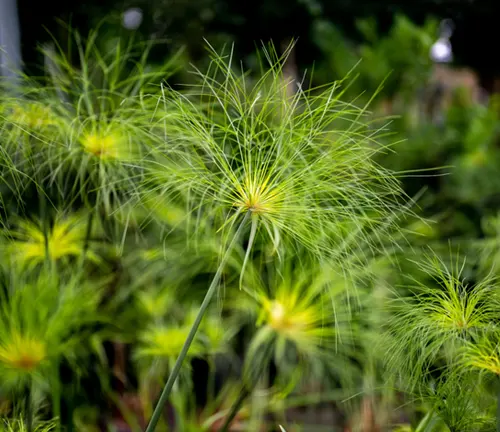

Papyrus has a distinctive appearance, with tall, sturdy stems that can reach up to 15 feet in height, crowned by tufts of thread-like, triangular leaves. What makes papyrus truly remarkable is its historical utility; ancient Egyptians used it to create one of the world’s first writing materials, papyrus scrolls.
The pithy core of the plant’s stem was sliced into thin strips, overlapped, and pounded to form sheets on which hieroglyphics and other texts were inscribed. Today, papyrus plants can still be found in wetlands and along the banks of the Nile River, serving as a living testament to the enduring legacy of this plant in both natural ecosystems and human culture.
| Characteristics | Description |
| Scientific Name | Cyperus papyrus |
| Family | Cyperaceae |
| Habitat | Native to the wetlands of Africa, primarily found along the Nile River. |
| Height | Typically grows to a height of 10 to 15 feet (3 to 4.5 meters). |
| Leaves | Long, slender, triangular leaves that form tufts at the top of the stems. |
| Stems | Sturdy, upright stems with a papery outer layer, which was historically used for making papyrus scrolls. |
| Life Cycle | Perennial plant, thriving in aquatic environments with its roots submerged in water. |
| Historical Use | Famous for its use in ancient Egypt to create the world’s first writing material, papyrus scrolls. |
| Cultural Significance | Papyrus is a symbol of ancient Egyptian culture and has been associated with art, writing, and history. |
| Conservation | Papyrus wetlands are important ecosystems, providing habitat for various wildlife and plants, making conservation efforts crucial. |
| Availability | Papyrus can still be found in natural wetland habitats in Africa and is sometimes cultivated for decorative purposes. |
Botanical Beauty of “Papyrus Plant”
The papyrus plant, Cyperus papyrus, is a botanical marvel that has captivated the world for centuries with its striking appearance and historical significance. This remarkable plant, native to the lush wetlands of Africa, boasts a unique blend of elegance and utility, making it a treasure in the world of botany.
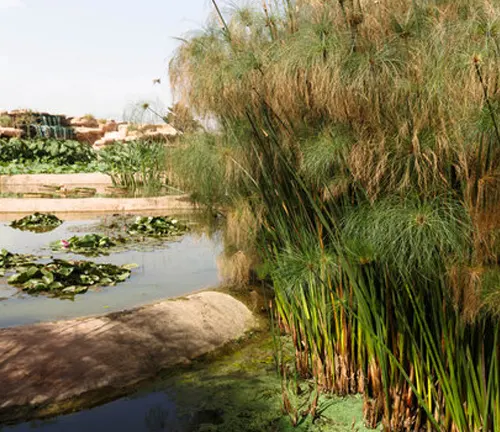
Woodland Elegance
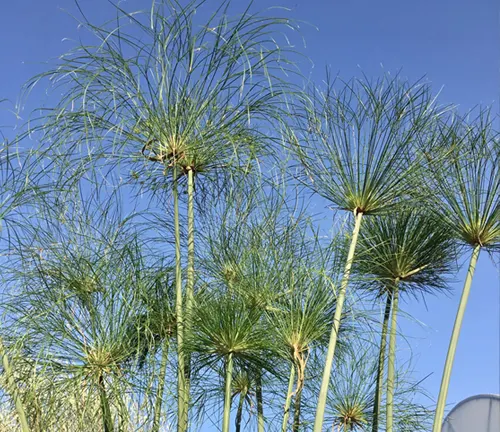
Papyrus plants are known for their striking aesthetic appeal. Rising gracefully from the water’s edge, they can reach impressive heights of up to 15 feet, crowned with tufts of slender, triangular leaves. These leaves give the plant an air of woodland elegance, their verdant beauty contributing to the plant’s historical and cultural significance.
Ecological Importance
Beyond its visual appeal, the papyrus plant plays a pivotal role in its ecosystem. Thriving in wetlands and along the banks of the Nile River, papyrus acts as a natural water purifier. It provides habitat and sustenance for various wildlife, from birds and insects to amphibians and fish. This ecological significance highlights the interconnectedness of nature and the need to protect these vital wetland ecosystems.

Cultivation and Conservation
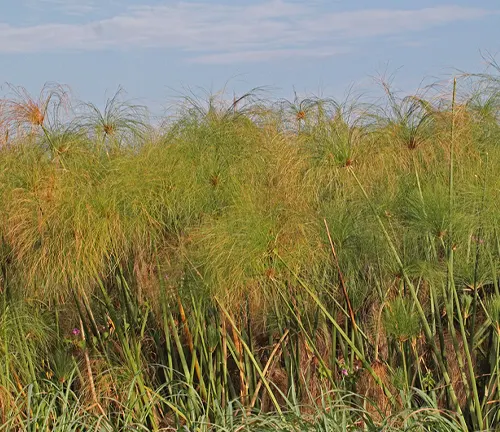
In recent years, efforts have been made to cultivate papyrus plants for both conservation and decorative purposes. By cultivating papyrus, we can contribute to the preservation of this culturally and ecologically significant species. Conservationists work tirelessly to protect the natural papyrus wetlands to maintain biodiversity and the plant’s unique ecological functions.
Fragrance
One of the lesser-known charms of the papyrus plant is its subtle, earthy fragrance. When the sun warms the wetland air, it carries the gentle scent of papyrus, creating a sensory experience for those in its proximity. This fragrance adds another layer of enchantment to the plant’s allure.
Soil Stabilization
Papyrus is not only a treat for the senses; it also serves a practical purpose. The dense root systems of papyrus plants aid in stabilizing the soil along water bodies. This helps prevent erosion and maintains the integrity of riverbanks and wetland environments. The role of papyrus in soil stabilization is essential for preserving these precious ecosystems.

Common Uses

The historical significance of papyrus is rooted in its common use as an early form of writing material. In ancient Egypt, the pithy core of the papyrus stem was sliced into thin strips, overlapped, and pounded to create sheets on which hieroglyphics and various texts were inscribed. These papyrus scrolls played a fundamental role in the preservation of knowledge and history.
Benefits
Papyrus plants offer an array of benefits to both the environment and culture. Ecologically, they support biodiversity and maintain wetland ecosystems. Culturally, they are a symbol of ancient Egypt’s rich history, representing the birth of written language. The papyrus plant is a testament to the harmonious relationship between humanity and the natural world, highlighting the importance of preserving and celebrating the botanical beauty that surrounds us.
Different Species
Cyperus papyrus
This is the most famous species, commonly known as the Egyptian papyrus plant. It was historically used to make papyrus scrolls and is native to the wetlands of Africa, particularly along the Nile River.
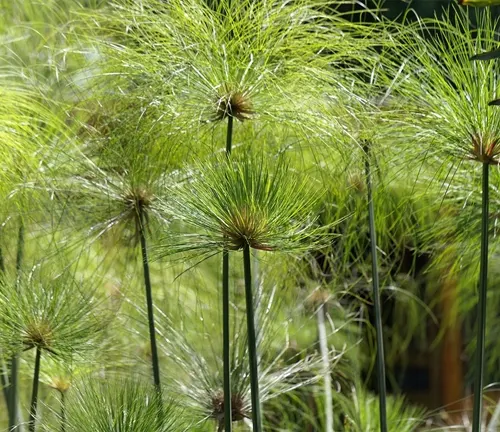
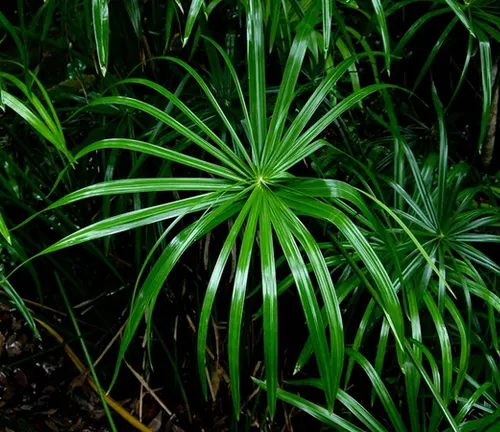
Cyperus alternifolius
Also known as umbrella papyrus or umbrella sedge, this species is well-known for its umbrella-like clusters of long, slender leaves. It is often grown as an ornamental plant and is native to Madagascar and nearby regions.
Cyperus haspan
Commonly called dwarf papyrus, this species is smaller in size compared to Cyperus papyrus. It is native to wetlands and riverbanks in parts of Africa and is often cultivated for its ornamental value.
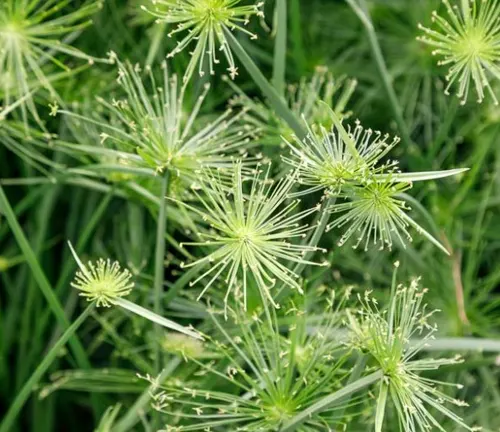

Cyperus longus
Also known as sweet galingale, this species is native to parts of Europe, Asia, and Africa. It is characterized by its fragrant rhizomes and is sometimes used in traditional herbal medicine and culinary applications.
Cyperus esculentus
This species is commonly referred to as yellow nutsedge or chufa. While it is considered a weed in some regions, its tubers are edible and have been used in various culinary dishes.

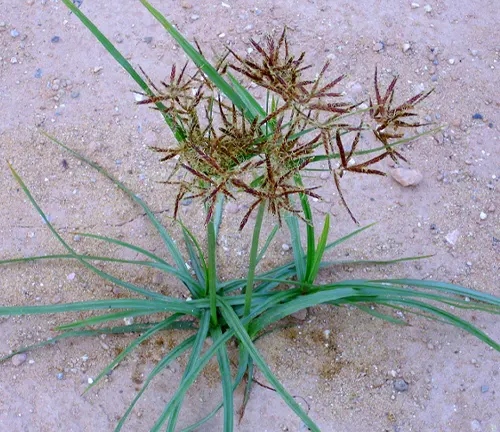
Cyperus rotundus
Known as purple nutsedge or nutgrass, this species is often considered an invasive weed. It has thin, grass-like leaves and is known for its ability to spread rapidly, making it a challenge for gardeners Cyperus esculentus: This species is commonly referred to as yellow nutsedge or chufa. While it is considered a weed in some regions, its tubers are edible and have been used in various culinary dishes.
Frequently Asked Questions (FAQs)
- What is a papyrus plant?
The papyrus plant, scientifically known as Cyperus papyrus, is a tall, aquatic plant native to the wetlands of Africa. It is renowned for its historical significance in ancient Egypt. - How tall can papyrus plants grow?
Papyrus plants can reach heights of up to 15 feet (4.5 meters), making them one of the tallest aquatic plants in the world. - What are the distinctive features of papyrus plants?
Papyrus plants have slender, triangular leaves that form tufts at the top of tall, sturdy stems. They are often described as having a graceful and elegant appearance. - What is the historical importance of papyrus plants?
Papyrus was used in ancient Egypt to create one of the earliest forms of writing material, known as papyrus scrolls. These scrolls played a vital role in preserving knowledge and history. - Where are papyrus plants found in the wild?
Papyrus plants are primarily found in the wetlands of Africa, particularly along the Nile River. They thrive in aquatic environments with their roots submerged in water. - Are papyrus plants used for anything other than writing material?
Yes, papyrus plants are used for soil stabilization along water bodies, offer ecological benefits, and are cultivated for ornamental purposes in gardens and water features. - Do papyrus plants have a pleasant fragrance?
Yes, when warmed by the sun, papyrus plants emit a subtle, earthy fragrance, adding to their sensory appeal. - Can I grow papyrus plants in my garden or pond?
Depending on your climate and water conditions, you may be able to cultivate papyrus for ornamental purposes. Be sure to research the specific requirements of the papyrus species you wish to grow. - How can papyrus plants be conserved and protected?
Conservation efforts are crucial to preserve papyrus wetlands and their unique ecosystems. This involves protecting natural habitats and promoting sustainable cultivation practices. - What are the cultural and symbolic associations of papyrus plants?
Papyrus is a symbol of ancient Egyptian culture and represents the birth of written language. It is also recognized for its importance in art, history, and civilization.


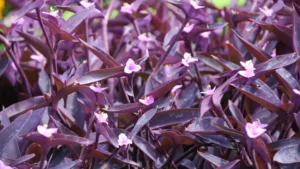

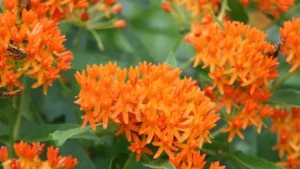

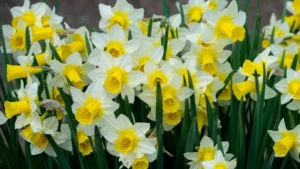

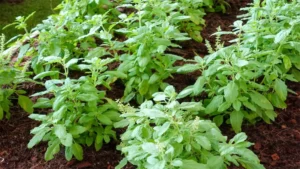


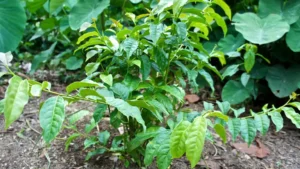


Leave your comment